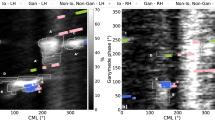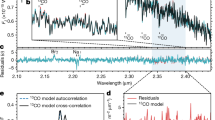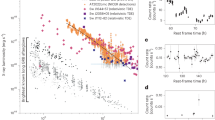Abstract
IN 1966 it was reported by Dulk and Clark1 that almost continuous, bursty, radiation from Jupiter can be detected at low frequencies if an aerial receiver system of sufficient sensitivity is available. Relative to this, Stone, Alexander and Erickson2 found a marked increase in emission probability at 26.3 Mc/s using the large array at Clark Lake Radio Observatory. Prolonged periods of activity were observed by Warwick3 on a number of occasions in 1960. Evidence is presented here of a related effect at 18 Mc/s observed on several occasions during the 1966–67 apparition of Jupiter.
This is a preview of subscription content, access via your institution
Access options
Subscribe to this journal
Receive 51 print issues and online access
$199.00 per year
only $3.90 per issue
Buy this article
- Purchase on SpringerLink
- Instant access to full article PDF
Prices may be subject to local taxes which are calculated during checkout
Similar content being viewed by others
References
Dulk, G. A., and Clark, T. A., Astrophys. J., 145, 945 (1966).
Stone, R. G., Alexander, J. K., and Erickson, W. C., Astrophys. J., 140, 374 (1964).
Warwick, J. W., Ann. NY Acad. Sci., 95, 39 (1961).
Author information
Authors and Affiliations
Rights and permissions
About this article
Cite this article
BARROW, C., WILLIAMS, J. Evidence of Continuum Emission from Jupiter at 18 Mc/s. Nature 216, 462–463 (1967). https://doi.org/10.1038/216462a0
Received:
Revised:
Published:
Issue date:
DOI: https://doi.org/10.1038/216462a0



